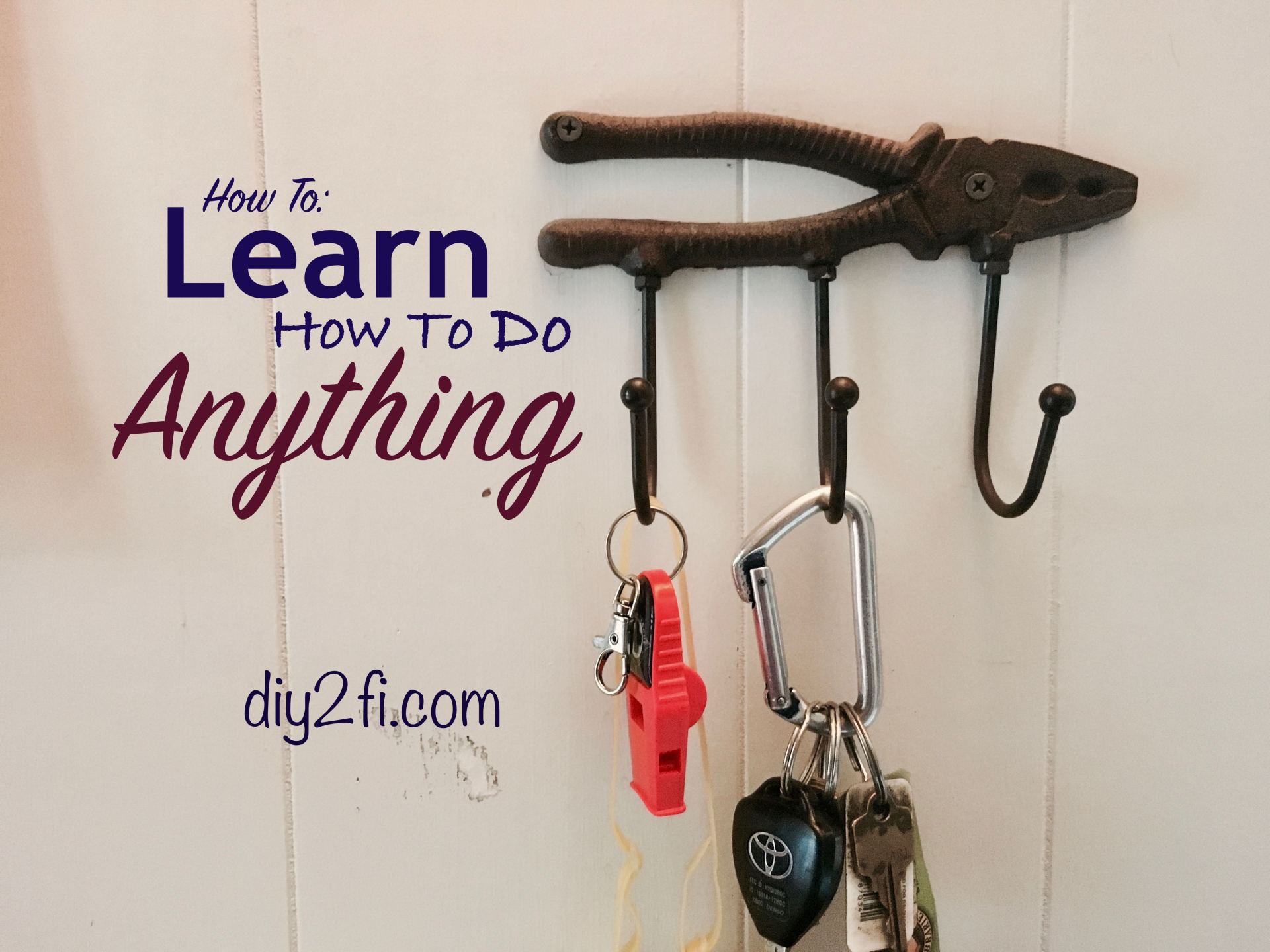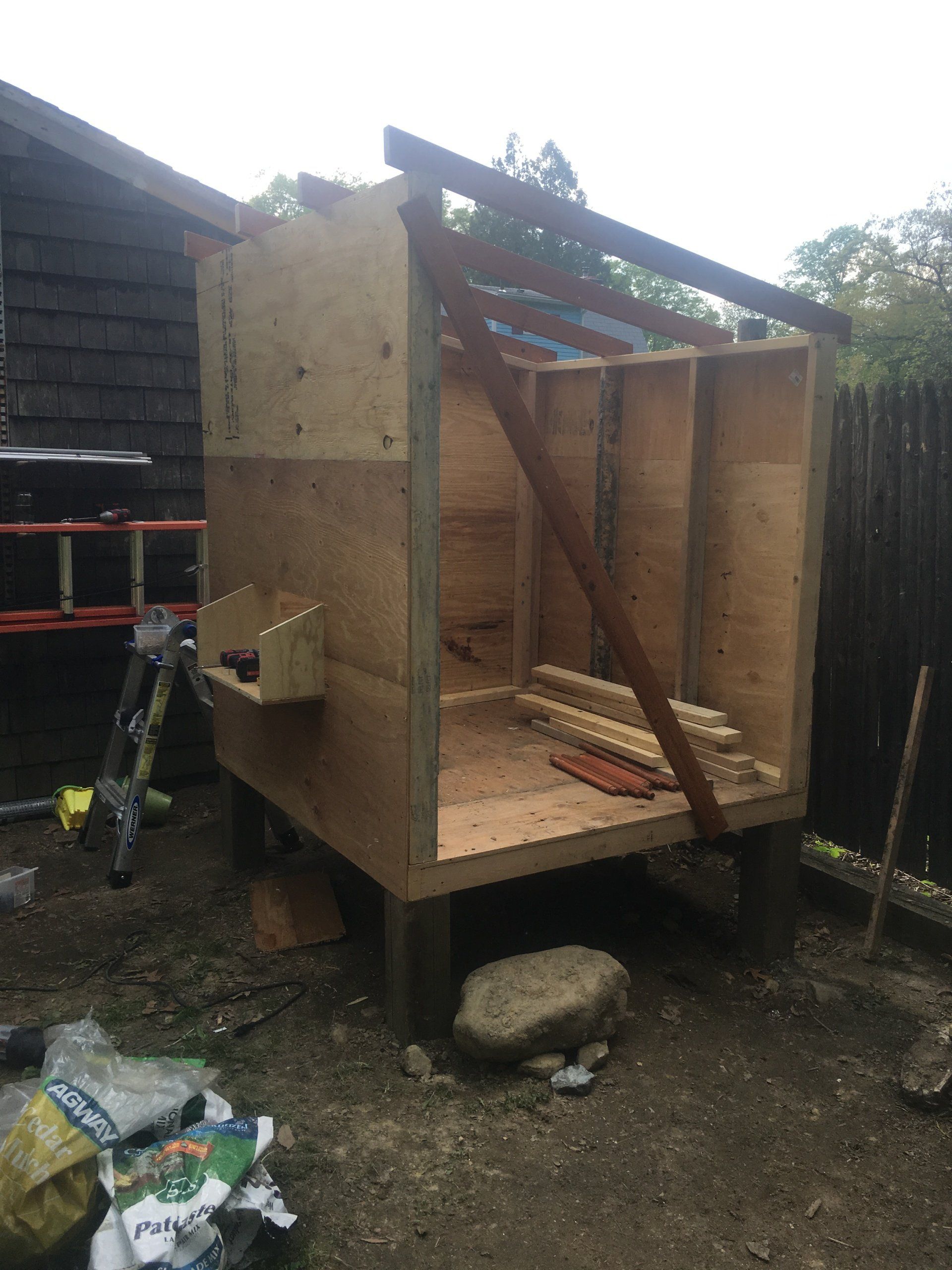How To: Learn How To Do Anything
- By Captain DIY
- •
- 19 Nov, 2018
- •

Learning a new skill or ability can be a laborious, difficult, immensely satisfying thing. The problem most people have when they set out to learn something new is the expectation that they will go from where they currently are (total n00b who is more likely to hurt themselves than accomplish anything) to getting congratulatory phone calls from the This Old House crew for their incredible work.
In case you were wondering, that’s not how any of this works.
In case you were wondering, that’s not how any of this works.
OK Mister Expert, Show Us The Way
While I have never claimed to be an expert on DIY skills, I have talked about how I developed my skills
over the years through various jobs and such. Every time I changed careers, which, if you read the article linked above, you would know that I did so frequently, I had to build up a new skill set to be able to do my job.
Along the rocky, winding, and often blurry path of my working life, I found myself continually in strange territory. At one job I would have to learn how to control a small piece of wood in a whirring tumult of electrically turbo-charged sandpaper. Soon after that I had to learn how to find the most expeditious route with which to deliver packages of chicken wings to multiple destinations.
I also, of course, had to learn how to sell myself and my seemingly unrelated skillset every time I interviewed for a new job in a field in which I had little or no experience. I’m gonna go ahead and toot my own horn for a minute here and say that I never went through an interview without getting offered the job at the end.
Along the rocky, winding, and often blurry path of my working life, I found myself continually in strange territory. At one job I would have to learn how to control a small piece of wood in a whirring tumult of electrically turbo-charged sandpaper. Soon after that I had to learn how to find the most expeditious route with which to deliver packages of chicken wings to multiple destinations.
I also, of course, had to learn how to sell myself and my seemingly unrelated skillset every time I interviewed for a new job in a field in which I had little or no experience. I’m gonna go ahead and toot my own horn for a minute here and say that I never went through an interview without getting offered the job at the end.
Bring That Ego Back Down to Earth, Pal
I’m sorry, I’m sorry! I let myself get a little excited! It’ll never happen again, I promise!
Getting back to the point; how does one go about learning a new skill that is completely removed from everything else they know? As Cody from Fly To FI says, you just need to work on getting one percent better.
When I tore the kitchen out and put a new one in, I was already well down the path of knowledge. I had a solid grasp on basic carpentry, I was comfortable around power tools, and, most importantly, I had the helpful eye of Tom (who you may remember from such projects as the Bathroom Renovation and How To Mud and Tape Drywall) to watch over me and make sure I didn’t screw anything up too bad. I just had to push my skills a little bit further to get to the point of building an actual kitchen.
In all areas of serious learning, having someone to act as your mentor is a huge learning boost, and can help you take the fast lane in your skill development. That being said, don’t worry if you don’t have a kindly retired carpenter Father-In-Law to back you up. You can still do this, you just have to pace yourself! Let’s look into how that might work.
Getting back to the point; how does one go about learning a new skill that is completely removed from everything else they know? As Cody from Fly To FI says, you just need to work on getting one percent better.
When I tore the kitchen out and put a new one in, I was already well down the path of knowledge. I had a solid grasp on basic carpentry, I was comfortable around power tools, and, most importantly, I had the helpful eye of Tom (who you may remember from such projects as the Bathroom Renovation and How To Mud and Tape Drywall) to watch over me and make sure I didn’t screw anything up too bad. I just had to push my skills a little bit further to get to the point of building an actual kitchen.
In all areas of serious learning, having someone to act as your mentor is a huge learning boost, and can help you take the fast lane in your skill development. That being said, don’t worry if you don’t have a kindly retired carpenter Father-In-Law to back you up. You can still do this, you just have to pace yourself! Let’s look into how that might work.
Example: Build A Chicken Coop

This is a great starting project for someone who has a little bit of skill with basic hand tools. If you have never touched a hammer, maybe don’t start with this. Don’t worry, we’ll talk you through the first steps you’ll need to get there first, but use these steps for a slightly less ambitious project for your maiden build voyage.
Also, if you don’t want chickens, that’s ok. This is just building a small basic structure that doesn’t have to be perfect, which is why it’s a great early development project. It could be a small storage area if you want, or a play structure for your kids.
The point is, it starts with a very simple skill: Using a saw to cut a board. Don’t feel discouraged if this doesn’t come super easy to you! Especially if you are using a hand saw, it takes some getting used to. If you are using a power saw and are wondering what exactly a “hand saw” is because you just took your saw out of the box and it’s your first time using tools, maybe go out and get a hand saw and use that first. It’s a lot harder to cut off a digit with a saw that doesn’t spin at 1000 RPM.
Remember folks, we’re taking small steps here. No need to go crazy!
Once you have figured out how to cut a board to length, the next skill to develop is hammering a nail into that board to attach it to another board. Eventually, you will be able to attach boards together in such a way as to build a wall. Put four of those together and you have the makings of a real structure! That you built!
The reason I used a chicken coop as my example is it is one of the first structures I built without someone looking over my shoulder. The best part about it is, like I said earlier, it doesn’t have to be perfect, because it’s a chicken coop. Nobody expects a chicken coop to be perfect. I mean, except for literally everyone on Pinterest, but we’re not building this for them, we’re building it for YOU! Also, all of those perfect chicken coops have a trail of broken and twisted carcasses of imperfect coops just out of range of the camera.
Also, if you don’t want chickens, that’s ok. This is just building a small basic structure that doesn’t have to be perfect, which is why it’s a great early development project. It could be a small storage area if you want, or a play structure for your kids.
The point is, it starts with a very simple skill: Using a saw to cut a board. Don’t feel discouraged if this doesn’t come super easy to you! Especially if you are using a hand saw, it takes some getting used to. If you are using a power saw and are wondering what exactly a “hand saw” is because you just took your saw out of the box and it’s your first time using tools, maybe go out and get a hand saw and use that first. It’s a lot harder to cut off a digit with a saw that doesn’t spin at 1000 RPM.
Remember folks, we’re taking small steps here. No need to go crazy!
Once you have figured out how to cut a board to length, the next skill to develop is hammering a nail into that board to attach it to another board. Eventually, you will be able to attach boards together in such a way as to build a wall. Put four of those together and you have the makings of a real structure! That you built!
The reason I used a chicken coop as my example is it is one of the first structures I built without someone looking over my shoulder. The best part about it is, like I said earlier, it doesn’t have to be perfect, because it’s a chicken coop. Nobody expects a chicken coop to be perfect. I mean, except for literally everyone on Pinterest, but we’re not building this for them, we’re building it for YOU! Also, all of those perfect chicken coops have a trail of broken and twisted carcasses of imperfect coops just out of range of the camera.
That's It for the Building Part
I’m not going to walk you through how to build a chicken coop in this article, as much as you may want me to drone on and on about setting posts and running chicken wire.
No, this article is simply about how to learn how to build a chicken coop, or a chair, or a website or a better body or learn Spanish. It doesn’t matter what you are trying to do, the learning process is the same for everything.
Recognize your starting point. Are you at step zero? Great! What do you need to do to get to step 1? Are you starting at step 23? Let’s work on making our way toward step 24.
Once you recognize what your current skill level is, just try to make yourself one little bit better. Give yourself a chance to grow a little bit at a time, and realize that, while the end goal is multiple steps away, every little bit of growth is one step closer.
As they say in motivational circles, a journey of 1,000 miles begins with a single step. Take that step, and then, when you’re ready, take another. Before you know it you’ll be exchanging DIY stories with Bob Vila!
No, this article is simply about how to learn how to build a chicken coop, or a chair, or a website or a better body or learn Spanish. It doesn’t matter what you are trying to do, the learning process is the same for everything.
Recognize your starting point. Are you at step zero? Great! What do you need to do to get to step 1? Are you starting at step 23? Let’s work on making our way toward step 24.
Once you recognize what your current skill level is, just try to make yourself one little bit better. Give yourself a chance to grow a little bit at a time, and realize that, while the end goal is multiple steps away, every little bit of growth is one step closer.
As they say in motivational circles, a journey of 1,000 miles begins with a single step. Take that step, and then, when you’re ready, take another. Before you know it you’ll be exchanging DIY stories with Bob Vila!
